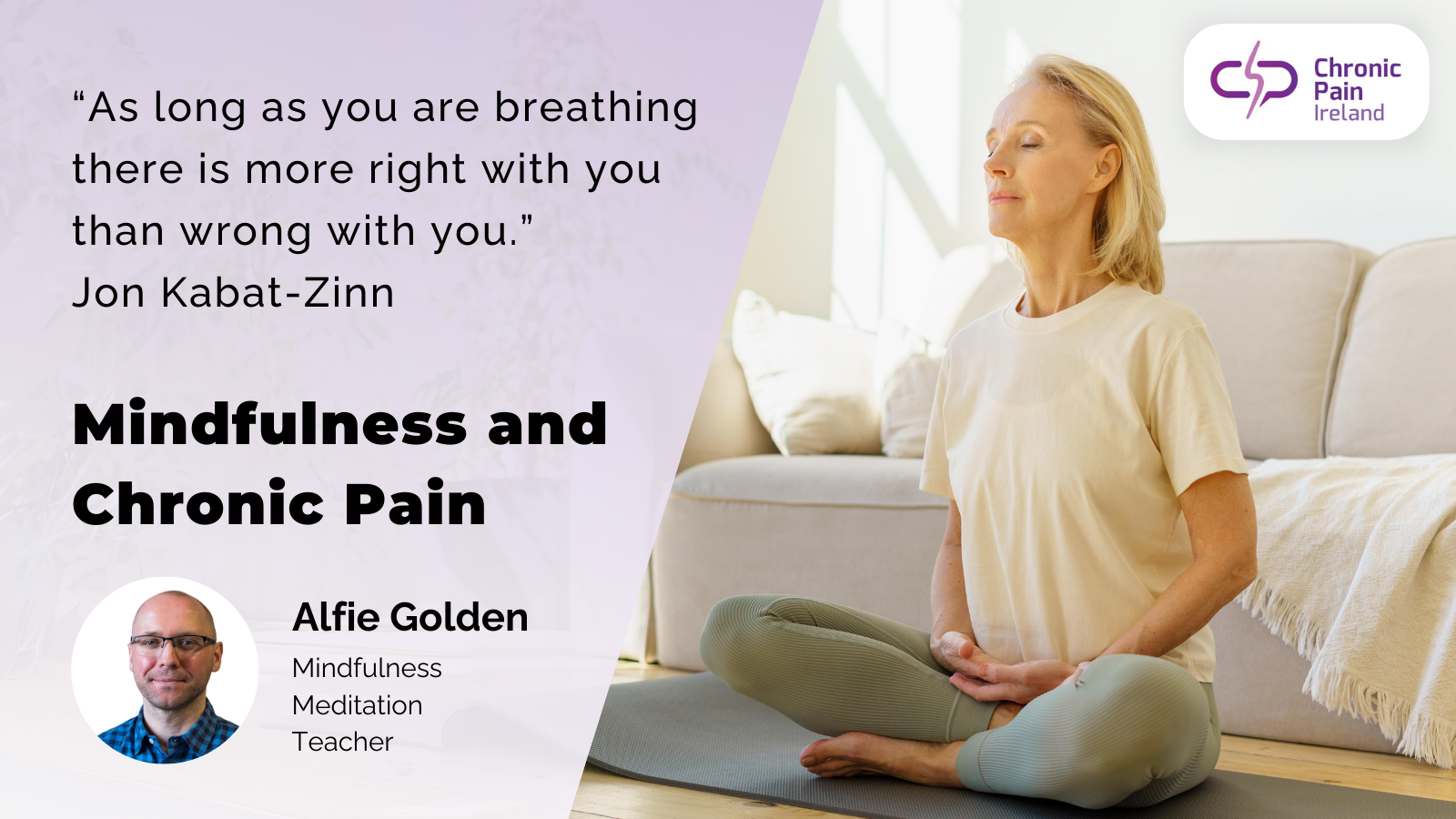Mindfulness and Chronic Pain: How It Helps
“As long as you are breathing there is more right with you than wrong with you.”
Jon Kabat-Zinn
The above quote from Jon Kabat-Zinn, the creator of the Mindfulness-Based Stress Reduction programme, is a good way to sum up the approach of mindfulness programmes to all kinds of difficulties. When we suffer from chronic pain or long-term illness it can, of course, be very distressing and seem to take up our whole lives and become who are. However, we can learn to recognize that this is only one part of our experience, not the whole story, and learn to live well even in difficult circumstances. For many people mindfulness is a way to do just that.
What Mindfulness is Not
There are so many misconceptions out there that it is often easier to start with what mindfulness is not.
Mindfulness is not:
- Therapy – although there are some mindfulness-based therapies
- Religion – even though it does come mainly from Buddhism what we generally practice in the West is secular (non-religious) mindfulness
- Relaxation – relaxation is a by-product but not the goal of mindfulness
- A cure for illness or pain – it is more a way of managing these skilfully
What is Mindfulness Then?
Mindfulness is a natural, trainable human capacity. It is the ability to be present in our lives, moment by moment, by non-judgmentally observing our bodies, minds, and our surroundings.
More than just a way of training ourselves to focus, it also encourages the development of curiosity, kindness, and compassion. We cultivate mindfulness by intentionally taking the time to connect with our bodies and minds through formal meditation practice, informal mindfulness exercises and self-reflection.
There is also now a growing body of research to show that mindfulness programmes, often referred to as Mindfulness-Based Interventions or MBI’s, can have a positive effect in a range of situations, one example being that MBI’s have been found to reduce pain intensity (Paschali et al 2023)
So Mindfulness and Chronic Pain: How It Helps?
In the context of mindfulness, we might speak of two types of pain – primary and secondary. Primary pain is the physical sensation we experience with illness or injury. Secondary pain relates more to the thoughts and emotions that accompany primary pain. For example, we might label the physical feeling of a broken bone or a cut as primary pain and the accompanying worry (“How am I going to work with a broken arm?”, “What if this is doesn’t heal properly?”) would be secondary pain.
Mindfulness can’t directly help get rid of the primary pain but can drastically reduce our secondary pain, which often has a longer lasting impact on us.
Mindfulness can help us to manage the mental/emotional side of long-term illness by changing our relationship to our symptoms, reducing the amount of worry, anxiety or stress that goes with them. This can then actually lower the amount of primary pain we perceive.
We may not have control over what is happening to our bodies but by developing a sense of kindness and compassion towards ourselves, along with the ability to clearly see our experience, we can change our experience of pain learn to live well with it.
Author: Alfie Golden
About the Author: Alfie Golden a graduate member of the Psychological Society of Ireland and accredited by the Mindfulness Teachers Association of Ireland. Having graduated from UCC with both a degree in Applied Psychology and a master’s degree in Mindfulness-Based Wellbeing, he has been practising mindfulness meditation for over 10 years and is passionate about helping others to discover the benefits for themselves of following evidence-based training in mindfulness.
Take part in Mindfulness and Chronic Pain guided meditation sessions: Chronic Pain Ireland in partnership with Alfie Golden hold a guided meditation session every month for our members. If you would like to learn more about these sessions please visit our events calendar https://chronicpain.ie/events/















